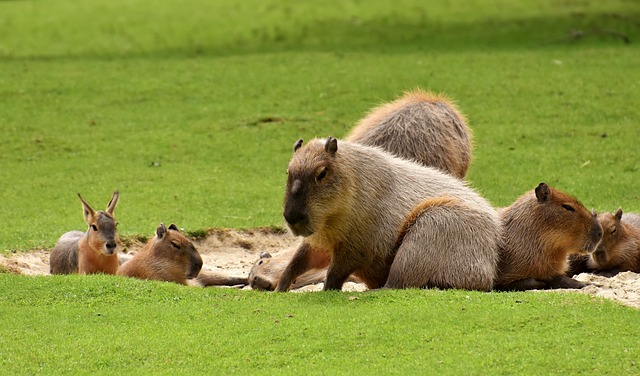Candles can create a warm and inviting atmosphere in any home. However, pet owners may wonder if burning candles could harm their furry friends.
Gerbils are popular pets, but are candles bad for them? The answer is not straightforward.
While candles are not toxic to gerbils, the fragrance oils and chemicals used to create scented candles can be harmful.
Gerbils have sensitive respiratory systems; inhaling the fumes from scented candles can cause respiratory distress or even death.
The smoke and soot produced by burning candles can irritate a gerbil’s eyes and nose.
Gerbil owners need to be cautious when burning candles in their homes. They should avoid using scented candles or any candles made with chemicals.
Instead, they can opt for natural beeswax or soy candles, less likely to produce harmful fumes.
Gerbil owners should also ensure that their pets are kept in a well-ventilated area while burning candles and should never leave them unattended.
Candles and Gerbils: A General Overview
Candles are a popular household item that many people use for relaxation and ambiance.
However, if you are a gerbil owner, you may wonder if candles are safe for your furry friend. This section will provide a general overview of the potential risks associated with burning candles around gerbils.
First and foremost, it is essential to note that candles can produce smoke and soot, which can harm gerbils if they inhale too much.
Additionally, some candles may contain fragrances or essential oils that can be toxic to gerbils if ingested or inhaled in large quantities.
If you do choose to burn candles around your gerbil, there are some precautions you can take to minimize the risks.
For example, you can use candles made from natural ingredients, such as beeswax or soy wax, which are less likely to produce harmful smoke and soot.
You can also avoid using candles with strong fragrances or essential oils.
It is generally best to err on caution when burning candles around gerbils. If you are concerned about the potential risks,
it may be best to avoid using candles altogether or to only use them in a well-ventilated area away from your gerbil’s living space.
Potential Risks of Candles to Gerbils
Inhalation Hazards
Gerbils have sensitive respiratory systems; candles can release harmful chemicals when burned.
The fumes from candles can cause respiratory distress, including coughing, wheezing, and difficulty breathing. Inhaling these fumes can also lead to more severe health problems, such as lung damage or death.
Temperature Changes
Candles can also create significant temperature changes in a room.
Gerbils are sensitive to temperature changes; sudden fluctuations can cause stress and health problems.
Candles can also create hot spots, which can cause burns or other injuries to your gerbil.
Fire Risks
Candles pose a significant fire risk, and gerbils are particularly vulnerable to fire-related injuries. If a candle is knocked over or comes in contact with flammable materials, it can quickly start a fire.
Gerbils cannot escape from a fire and can suffer severe burns or even die in a fire.
To protect your gerbil from the potential risks of candles, it is best to avoid using them in areas where your gerbil spends time.
If you must use candles, keep them safe, away from your gerbil’s cage and any flammable materials. Use caution when burning candles, and never leave them unattended.
Alternatives to Candles in Gerbil Habitats
Candles can pose a risk to gerbils due to the potential for fire and the release of harmful chemicals.
Fortunately, there are several alternatives to candles that can provide a safe and comfortable environment for gerbils.
One option is to use battery-operated LED lights to create a warm and cozy atmosphere in the gerbil habitat.
These lights are available in various colors and can be easily attached to the walls or ceiling of the habitat. They are also energy-efficient and long-lasting, making them a cost-effective option.
Another alternative is to use natural light sources, such as sunlight or moonlight, to illuminate the gerbil habitat.
This can be achieved by placing the habitat near a window or using a skylight. However, ensuring that the gerbils are not exposed to direct sunlight for extended periods is essential, as this can lead to overheating and dehydration.
In addition, gerbil owners can use essential oil diffusers or wax warmers to create a pleasant scent in the habitat. However, natural and non-toxic oils and wax melts are necessary, as some fragrances can harm gerbils.
Overall, there are several alternatives to candles that can provide a safe and comfortable environment for gerbils.
Using battery-operated LED lights, natural light sources, and non-toxic essential oils allows gerbil owners to create a cozy and inviting habitat for their furry friends.
Conclusion
In conclusion, while candles may not be directly harmful to gerbils, they can still pose a potential risk to their health. The smoke and scent from candles can irritate a gerbil’s sensitive respiratory system, leading to breathing difficulties and other health issues.
Additionally, if a gerbil chews on a candle, it could obstruct its digestive system, causing pain and potentially requiring surgery.
Therefore, it is recommended that gerbil owners avoid using candles in their homes or near their pets. Instead, they should consider using alternative methods to freshen the air, such as air purifiers or natural essential oils that are safe for pets.
Overall, the health and safety of gerbils should always be a top priority for their owners, and taking precautions to minimize potential risks is essential for their well-being.




